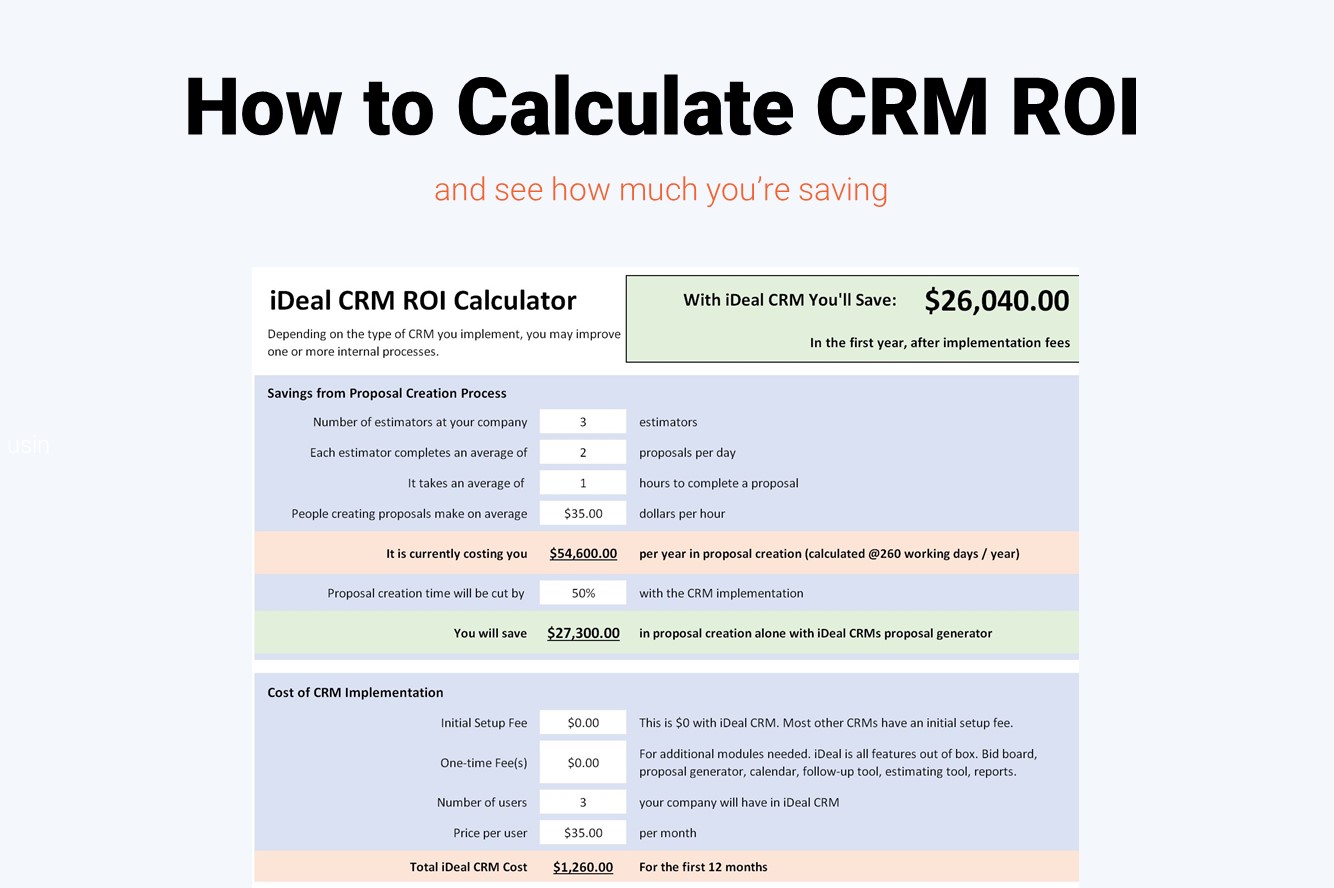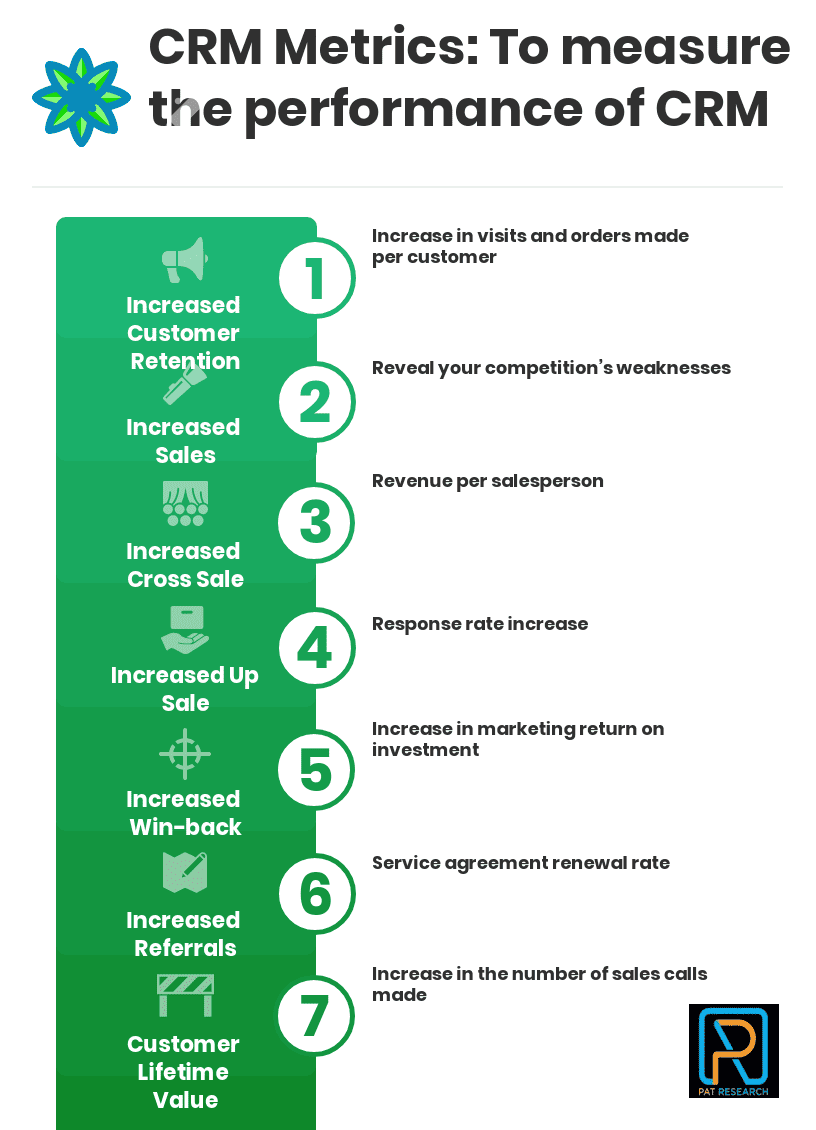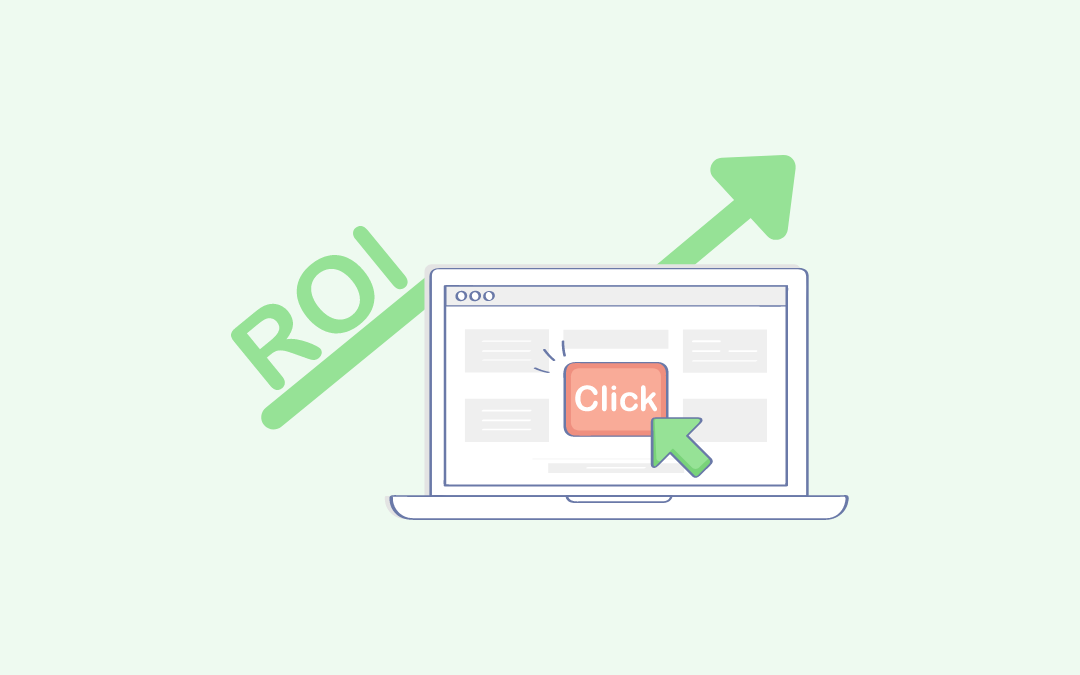Customer relationship management (CRM) software is a powerful tool that can help businesses improve their relationships with customers and increase sales. However, many businesses struggle to measure the return on investment (ROI) from their CRM implementation.
In this article, we will provide a step-by-step guide on how to measure ROI from CRM implementation. We will also provide tips on how to maximize your ROI and avoid common pitfalls.
Unlocking the Value of CRM: Measuring Your Return on Investment
Defining Your Success Metrics
Before you start measuring ROI, you need to define what success looks like for your CRM implementation. What are your key performance indicators (KPIs)? Are you aiming to increase sales, improve customer satisfaction, or reduce marketing costs? Establishing clear KPIs will provide a framework for tracking your progress and ultimately measuring ROI.
| KPI | Description | Measurement |
|---|---|---|
| Customer Acquisition Cost (CAC) | The cost of acquiring a new customer. | Cost of marketing campaigns / Number of new customers acquired |
| Customer Lifetime Value (CLTV) | The total revenue a customer generates over their lifetime. | Average purchase value Average number of purchases Average customer lifespan |
| Customer Satisfaction (CSAT) | A measure of how satisfied customers are with your products or services. | Surveys, feedback forms, reviews |
| Net Promoter Score (NPS) | A measure of customer loyalty and advocacy. | Survey asking customers how likely they are to recommend your business. |
Analyzing Your Data
Once you have defined your KPIs, you need to collect and analyze data to track your progress. Your CRM system should provide you with a wealth of data on your customers, their interactions with your business, and your sales performance. Use this data to identify trends, measure your KPIs, and assess the impact of your CRM implementation.
Calculating Your ROI
With your data in hand, you can start to calculate your ROI. There are several different methods for calculating ROI, but a common approach is to compare the costs of your CRM implementation with the benefits you have gained. For example, you might calculate the ROI of your CRM implementation by dividing the increase in revenue generated by the implementation by the total cost of the implementation.
| Benefit | Measurement | Example |
|---|---|---|
| Increased Sales | Increase in revenue generated | $100,000 increase in sales |
| Improved Customer Satisfaction | Increase in CSAT score | 10% increase in CSAT score |
| Reduced Marketing Costs | Decrease in marketing expenses | $20,000 reduction in marketing costs |
How to calculate ROI for CRM system?

Define Your Goals and Metrics
Before you can calculate ROI, you need to clearly define your goals for implementing a CRM system. What are you hoping to achieve? Increase sales? Improve customer satisfaction? Reduce churn? Once you know your goals, you need to identify the key metrics you’ll use to measure progress. This could include things like:
- Sales revenue
- Customer acquisition cost (CAC)
- Customer lifetime value (CLTV)
- Customer satisfaction ratings
- Churn rate
Track Your Costs
Next, you need to track all of the costs associated with implementing and using your CRM system. This includes:
- Software costs
- Implementation costs
- Training costs
- Ongoing maintenance costs
Calculate Your ROI
Once you have a good understanding of your goals, metrics, and costs, you can calculate your ROI using the following formula:
ROI = (Return on Investment – Cost of Investment) / Cost of Investment
For example, if your CRM system costs $10,000 to implement and you generate $20,000 in additional revenue as a result, your ROI would be 100%. This means you’ve earned back your initial investment and generated a 100% profit.
How do you measure success of CRM implementation?

Key Performance Indicators (KPIs)
Measuring the success of a CRM implementation involves tracking specific Key Performance Indicators (KPIs) that reflect the desired outcomes. These KPIs can vary based on the organization’s objectives, but some common indicators include:
- Customer Acquisition Cost (CAC): This measures the cost of acquiring a new customer. A decrease in CAC indicates a more efficient acquisition process.
- Customer Lifetime Value (CLTV): This metric represents the total revenue a customer is expected to generate over their relationship with the company. An increase in CLTV signifies improved customer retention and loyalty.
- Customer Satisfaction (CSAT): This measures the level of satisfaction customers have with the products, services, and overall experience. High CSAT scores suggest that the CRM is effectively addressing customer needs.
- Net Promoter Score (NPS): This measures customer loyalty and willingness to recommend the company to others. A higher NPS indicates strong customer advocacy.
- Sales Conversion Rate: This measures the percentage of leads that convert into paying customers. An increase in conversion rates indicates improved lead management and sales processes.
- Return on Investment (ROI): This measures the financial return generated by the CRM investment. A positive ROI indicates that the CRM is contributing to profitability.
Process Efficiency and Automation
A successful CRM implementation should streamline business processes and automate tasks, leading to greater efficiency and productivity. Here’s how to measure this:
- Time spent on tasks: Track the time spent on repetitive tasks before and after CRM implementation. A significant reduction indicates improved efficiency.
- Error rates: Analyze error rates in data entry and other tasks. A decrease in error rates suggests improved accuracy and data quality.
- Number of automated tasks: Identify the number of tasks that have been automated through the CRM. A higher number indicates greater process efficiency.
- Customer interaction time: Measure the time it takes to resolve customer inquiries and handle support requests. A decrease in interaction time indicates improved customer service efficiency.
User Adoption and Engagement
CRM success depends on user adoption and engagement. To measure this, consider the following:
- Number of active users: Track the number of users regularly accessing and utilizing the CRM platform. A higher number indicates wider user adoption.
- User feedback: Collect feedback from users on their experience with the CRM. Positive feedback suggests user satisfaction and ease of use.
- CRM usage metrics: Analyze user interactions with the CRM, such as the number of records accessed, reports generated, and tasks completed. High usage suggests effective utilization of the platform.
- Training and support: Evaluate the effectiveness of training programs and ongoing support provided to users. Adequately trained and supported users are more likely to engage with the CRM effectively.
What is the average ROI for a CRM?

There is no single average ROI for a CRM system, as it depends on many factors. These include the specific CRM system, the industry, the size of the company, and how effectively the system is implemented and used. However, studies have shown that CRMs can significantly impact businesses.
- Increased sales and revenue: CRMs can help businesses improve sales by providing a centralized view of customer interactions, automating sales processes, and identifying potential sales opportunities. A 2020 study by Nucleus Research found that CRMs can lead to a 27% increase in sales productivity.
- Improved customer satisfaction: By providing better customer service and personalized experiences, CRMs can increase customer satisfaction and loyalty. A 2019 study by Gartner found that 89% of companies reported that their CRM had a positive impact on customer satisfaction.
- Reduced costs: CRMs can help businesses streamline operations, automate tasks, and improve efficiency, resulting in reduced costs. A 2018 study by Salesforce found that companies using CRMs saw an average cost reduction of 15%.
Factors affecting ROI
Several factors can affect the ROI of a CRM system. These include:
- The specific CRM system: Different CRM systems offer different features and functionalities. Choosing the right CRM system for your business needs is essential.
- The industry: The ROI of a CRM system can vary depending on the industry. For example, a CRM system for a retail business may have a different ROI than a CRM system for a healthcare business.
- The size of the company: The ROI of a CRM system can also vary depending on the size of the company. Larger companies may see a higher ROI than smaller companies.
- The effectiveness of implementation and use: The success of a CRM system depends on how well it is implemented and used. Companies must ensure that their employees are properly trained and that the system is integrated into their existing workflows.
How to measure ROI
To measure the ROI of your CRM system, you need to track key metrics such as:
- Sales revenue: Track the increase in sales revenue after implementing the CRM system.
- Customer satisfaction: Measure customer satisfaction through surveys and feedback.
- Marketing costs: Track the cost of marketing campaigns before and after implementing the CRM system.
- Customer acquisition costs: Track the cost of acquiring new customers before and after implementing the CRM system.
- Customer retention rates: Track the percentage of customers who remain loyal to your business after implementing the CRM system.
Why is CRM ROI difficult to measure?

Difficulties in Attributing Revenue to CRM
One of the primary reasons why CRM ROI is difficult to measure is the challenge in directly attributing revenue to CRM efforts. CRM is often a multifaceted system that touches upon various aspects of a business, from sales and marketing to customer service and support. It’s difficult to isolate the impact of CRM on revenue generation, as other factors like marketing campaigns, product development, and overall market conditions can also play a significant role.
- Data silos and inconsistencies: Businesses often struggle with data silos and inconsistencies across different departments, making it challenging to get a complete view of the customer journey and attribute revenue to CRM activities.
- Multi-touch attribution: Customers rarely make a purchase based on a single interaction. It’s often a result of multiple touchpoints across different channels, making it difficult to pinpoint which specific CRM activities contributed to the sale.
- Unclear CRM goals and metrics: Without clear goals and metrics defined for CRM initiatives, it’s difficult to track progress and measure ROI effectively.
Challenges in Quantifying Soft Benefits
While CRM can deliver tangible benefits like increased sales and reduced customer churn, many of its impacts are intangible and difficult to quantify. These «soft benefits» include improved customer satisfaction, enhanced brand loyalty, and increased employee productivity, which are hard to measure in financial terms.
- Subjective nature: Soft benefits are often subjective and rely on qualitative feedback, making it difficult to objectively quantify their impact on ROI.
- Long-term benefits: Some soft benefits, like improved customer loyalty, may take time to materialize, making it challenging to measure their immediate impact on ROI.
- Lack of standardized metrics: There are no industry-standard metrics for measuring soft benefits, making it difficult to compare results across different businesses.
Limitations of Traditional ROI Calculation Methods
Traditional ROI calculation methods, which focus on quantifiable financial returns, may not be suitable for measuring the full value of CRM. CRM goes beyond simply generating revenue; it also improves operational efficiency, customer satisfaction, and employee productivity. These intangible benefits are difficult to capture using traditional ROI calculations.
- Ignoring intangible benefits: Traditional ROI calculations often focus solely on tangible financial returns, ignoring the significant impact of CRM on soft benefits like customer satisfaction and employee productivity.
- Short-term perspective: Traditional ROI calculations often take a short-term perspective, overlooking the long-term benefits of CRM, such as increased customer retention and brand loyalty.
- Oversimplification of complex processes: Traditional ROI calculations often simplify complex processes, failing to account for the various interactions and touchpoints involved in a customer journey.
Frequently Asked Questions
What is the best way to measure the ROI of a CRM implementation?
There is no one-size-fits-all answer to this question, as the best way to measure ROI will vary depending on the specific goals and objectives of your CRM implementation. However, some common metrics that can be used to measure ROI include:
- Increased sales revenue: This is perhaps the most obvious metric for measuring ROI, as a CRM can help to increase sales by improving customer relationships, streamlining sales processes, and providing valuable insights into customer behavior.
- Improved customer satisfaction: A CRM can help to improve customer satisfaction by providing a more personalized and efficient customer experience. This can be measured through customer surveys, feedback forms, and social media sentiment analysis.
- Reduced customer churn: A CRM can help to reduce customer churn by identifying and addressing customer issues before they become problems. This can be measured by tracking the rate of customer churn before and after implementing the CRM.
- Increased productivity: A CRM can help to increase productivity by automating tasks, streamlining processes, and providing employees with easy access to customer information. This can be measured by tracking the amount of time employees spend on tasks related to customer interactions.
- Improved efficiency: A CRM can help to improve efficiency by reducing the number of manual tasks required to manage customer relationships. This can be measured by tracking the number of tasks that are automated by the CRM.
How can I track the success of my CRM implementation?
Tracking the success of your CRM implementation is essential for ensuring that you are getting a return on your investment. There are a number of ways to track success, but some of the most important include:
- Define your key performance indicators (KPIs): Before you implement your CRM, you should define your KPIs. These are the metrics that will help you to track the success of your implementation. Some common KPIs include increased sales revenue, improved customer satisfaction, reduced customer churn, increased productivity, and improved efficiency.
- Set realistic goals: It is important to set realistic goals for your CRM implementation. Don’t expect to see overnight results. Instead, focus on achieving small wins over time.
- Track your progress regularly: Once you have defined your KPIs and set your goals, it is important to track your progress regularly. This will help you to identify any areas where you need to make adjustments.
- Use data to inform your decisions: The data that you collect from your CRM can be used to inform your decisions about how to improve your customer relationships and your business processes.
What are some common challenges associated with measuring ROI from CRM implementation?
Measuring ROI from CRM implementation can be challenging, but there are a number of things that you can do to overcome these challenges. Some of the most common challenges include:
- Defining the right metrics: It is important to define the right metrics for measuring ROI. You need to choose metrics that are relevant to your business goals and that you can actually track.
- Attributing success to the CRM: It can be difficult to attribute success to the CRM, as it is often just one piece of the puzzle. You need to be able to isolate the impact of the CRM from other factors that might be contributing to your success.
- Measuring the impact on soft metrics: It can be difficult to measure the impact of the CRM on soft metrics such as customer satisfaction and brand loyalty. These metrics are often subjective and difficult to quantify.
- Lack of data: You may not have the data you need to measure ROI, especially if you are not using the CRM to its full potential. You need to ensure that you are collecting the right data and that you are using it to track your progress.
What are some tips for maximizing ROI from CRM implementation?
There are a number of things that you can do to maximize ROI from CRM implementation. Some of the most important include:
- Choose the right CRM: Not all CRMs are created equal. It is important to choose a CRM that is right for your business needs. You need to consider factors such as your budget, the size of your company, the industries you serve, and the features that you require.
- Get buy-in from your employees: It is important to get buy-in from your employees if you want to see success from your CRM implementation. You need to ensure that your employees are properly trained on how to use the CRM and that they understand the benefits of using it.
- Use the CRM to its full potential: You need to make sure you are using the CRM to its full potential. This means using all of the features and functionality that it offers.
- Continuously evaluate and improve: It is important to continuously evaluate and improve your CRM implementation. You need to track your progress, identify areas for improvement, and make changes as needed.
By following these tips, you can increase your chances of maximizing ROI from your CRM implementation.



